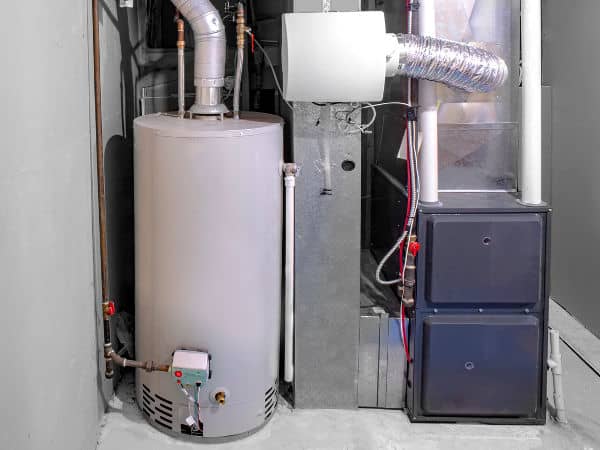Almost everyone may have their private way of thinking on the subject of How to Maintain a Hot Water Heater in a Few Simple Steps.

Hot water is important for daily comfort, whether it's for a refreshing shower or cleaning meals. To ensure your warm water system runs effectively and lasts longer, regular upkeep is crucial. This short article provides sensible ideas and insights on just how to keep your home's hot water system to stay clear of interruptions and costly fixings.
Introduction
Maintaining your home's warm water system may seem overwhelming, however with a couple of basic steps, you can guarantee it operates efficiently for many years to come. This overview covers everything from comprehending your hot water system to do it yourself maintenance pointers and understanding when to call in expert help.
Value of Maintaining Your Warm Water System
Regular upkeep not only prolongs the life-span of your hot water system yet also guarantees it operates effectively. Neglecting maintenance can bring about reduced performance, higher power bills, and even early failure of the system.
Indications Your Warm Water System Needs Upkeep
Knowing when your hot water system requires focus can avoid significant concerns. Look out for indications such as irregular water temperature, unusual sounds from the heating system, or rusty water.
Comprehending Your Hot Water System
Before diving right into upkeep tasks, it's practical to recognize the fundamental elements of your warm water system. Commonly, this consists of the hot water heater itself, pipelines, anode rods, and temperature controls.
Monthly Maintenance Tasks
Routine regular monthly checks can aid capture small issues prior to they rise.
Flushing the Water Heater
Flushing your water heater eliminates debris accumulation, improving efficiency and prolonging its life.
Checking and Replacing Anode Rods
Anode rods stop rust inside the storage tank. Inspecting and replacing them when worn out is essential.
Examining and Changing Temperature Settings
Changing the temperature level setups makes sure ideal efficiency and security.
DIY Tips for Maintenance
You can do a number of upkeep tasks yourself to keep your hot water system in leading condition.
Looking for Leaks
Consistently check pipelines and connections for leakages, as these can bring about water damage and greater costs.
Checking Pressure Relief Valves
Examining the stress relief valve guarantees it works properly and avoids excessive stress accumulation.
Insulating Pipes
Shielding warm water pipes decreases heat loss and can conserve energy.
When to Call a Professional
While DIY upkeep is beneficial, some problems need professional expertise.
Facility Issues Calling For Expert Aid
Instances include major leakages, electrical issues, or if your water heater is consistently underperforming.
Regular Expert Upkeep Perks
Professional maintenance can consist of complete evaluations, tune-ups, and ensuring conformity with safety criteria.
Final thought
Routine upkeep of your home's warm water system is necessary for effectiveness, long life, and price financial savings. By adhering to these pointers and knowing when to seek professional help, you can make certain a trustworthy supply of warm water without unforeseen disruptions.
How to Maintain an Instant Hot Water Heater
Before tinkering with your hot water heater, make sure that it’s not powered on. You also have to turn off the main circuit breaker and shut off the main gas line to prevent accidents. Also turn off the water valves connected to your unit to prevent water from flowing into and out of the appliance. 2. When you’re done, you have to detach the purge valves’ caps. These look like the letter “T†and are situated on either side of the water valves. Doing so will release any pressure that has accumulated inside the valves while at the same time avoid hot water from shooting out and burning your skin. 3. When the purge valves’ caps are removed, you have to connect your hosing lines to the valves. Your unit should have come with three hoses but if it didn’t, you can purchase these things from any hardware or home repair shops. You can also get them from retail stores that sell water heating systems. Read the user’s manual and follow it to complete this task properly. When the hosing lines are connected, open the purge port’s valves. 4. You should never use harsh chemical cleaners or solutions when cleaning your unit. Make use of white vinegar instead. It should be undiluted and you’ll probably use about 2 gallons. 5. Now flush your water heater. This task should probably take about 40 minutes. We can’t give you specific directions for this because the procedure is carried out depending on the type, model and brand of your heater. With that being said, refer to the user’s manual. 6. When you’re done draining the unit, you have to turn off the purge port valves again. Remove the hosing lines that you earlier installed on each of the water valves. Put the valve caps (purge port) back in their respective places and be very careful so as not to damage the rubber discs that are found inside these caps. 7. Now that everything’s back in place, check your user’s manual again to find out how to reactivate your water heating system. 8. Once it is working, turn one of your hot water faucets on just to let air pass through the heater’s water supply pipes. Leave the tap on until water flows smoothly out of it. https://www.orrplumbing.com/blog/2014/september/how-to-maintain-an-instant-hot-water-heater/
As a fervent reader about What Kind of Maintenance Do Water Heaters Need?, I was thinking sharing that piece of writing was a smart idea. Those who liked our post kindly remember to share it. Kudos for your time. Come back soon.
Call Us Today